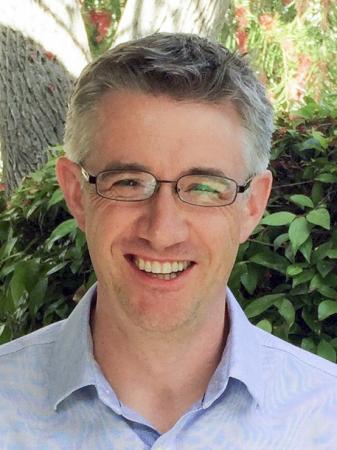
Richard Buttery
Richard Buttery
General Atomics
Friday, December 8, 2017
3:00pm
Abstract: Development of an efficient fusion reactor requires the simultaneous optimization of the plasma operating scenario and underlying hardware. These are inextricably linked; an effective operating scenario reduces demand on key components. The critical challenge is to reduce recirculating power; if significant auxiliary heating or current drive is needed, this drives up required fusion power to run these systems, and thus size, heat flux, neutron load, and cost. The Advanced Tokamak concept addresses this through a fortuitous alignment of high plasma pressure operation with strong self-driven bootstrap current and low turbulent transport. Here, research into transport, stability and energetic particle interactions has identified the key principles behind a solution. Further, new integrated physics simulations, the first combining TGLF core, EPED pedestal and appropriate current drive models, show the various trade-offs and path to optimize the approach. Higher pressure of course increases fusion performance. But increasing the density has greater leverage, raising the self-driven bootstrap current and thus decreasing demand for auxiliary current drive systems. Potential net-electric solutions are indicated at ~4m radius and ~6T using conventional superconductors. However, higher field, high Tc superconductors provide greater margin in attainable beta, density, safety factor and neutron load, as well as easier maintenance and thus higher duty cycle. The plasma exhaust is managed by a combination of core radiation, flux expansion and radiative divertor, tuned to ensure H mode sustainment. Divertor solutions similar to ITER are possible, but continuous operation may require a more advanced configuration to reduce erosion. Overall, studies show that well targeted research in the coming years could validate these concepts to provide the basis to proceed with a compact Advanced Tokamak power plant. This talk will set out the key physics and hardware considerations behind its design.
BIO: Dr. Buttery is the Experimental Science Director on the DIII-D National Fusion Facility. He has been in the US program for the last eight years, having previously worked in the European program, and as a U.S. collaborator, at the Culham Centre for Fusion Energy (now UKAEA) where he was a Task Force leader on the Joint European Torus in Oxfordshire exploring stability and ITER operating scenarios, as well as working on the COMPASS-D, START and MAST facilities. He was physics leader for the MAST Upgrade, and was a European topical group leader. His scientific work has concentrated on tearing modes, role of 3D fields, stability and equilibria, spanning both simulation and experiments on various devices. His PhD was in Theoretical Particle Physics and he is a Fellow of the UK Institute of Physics.